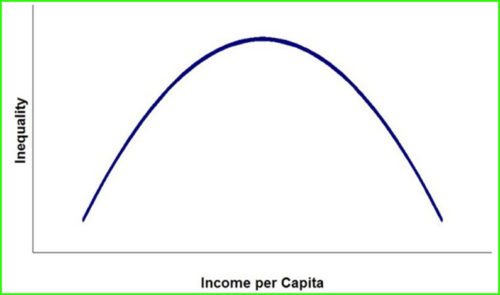
Author: Danko Kalkan, Green Finance and Environmental Management Unit Coordinator in ProCredit Bank’s subsidiary in Serbia
In most capitalist economies, it is a generally accepted rule that environmental improvements must wait until economic growth has reached a certain level. This misguided mantra has led to delays in the implementation of sustainable development principles, resulting in today’s environmental and climate crisis.
When talking about sustainable development, one must keep in mind that this type of development seeks to establish a balance of economic, ecological, and social objectives. However, the reality is that the maximization of profit and growth of national economies have for decades been the primary objectives.
The dominant economic system of today is based on the idea of constant growth and development. Incidentally, this idea relies on a series of erroneous presuppositions, and the most critical one, from the environmental perspective, is that natural resources are unlimited. Moreover, it can often be heard that the environment must be sacrificed for the sake of economic growth.
Economic growth first, then we can talk about ecology
American economist and statistician Simon Kuznets has contributed to economic science with the discovery of the correlation between inequality and long-term economic development. According to his findings, market forces increase economic inequality over time (during the industrialization period) and then decrease it once a country has completed the industrialization process.

In the 1990s, American economists Gene M. Grossman and Alan B. Krueger compared data on gross domestic product (GDP) movements in about 40 countries with information on the local water and air pollution, arriving at a conclusion that pollution had increased over time and then began to decrease as GDP expanded. The shape was identical to the Kuznets curve, so their discovery was named the environmental Kuznets curve.
The curve tells us that economic development in early stages leads to increased environmental threats, and then, after a certain level of development is reached, environmental degradation declines. The curve shows that we must be patient until we have reached a certain level of economic development in order to see the state of the environment improve.
Economists who support this theory mainly use three arguments. Firstly, as living standards increase, the population begins to care about environmental problems, demanding high standards and strict rules. Secondly, the industries of rich countries can afford cleaner (more expensive) technologies. Finally, in developed economies the share of the services sector increases at the expense of manufacturing, which supposedly automatically leads to a reduction in direct pollution.
Still, the state of the economy is not decisive
The arguments of proponents of the environmental Kuznets curve have several shortcomings. The deficiencies of this theory are reflected primarily in the fact that, from the environmental perspective, it does not take into account important information such as the use of resources, emissions of harmful gases, loss of biodiversity, land degradation, deforestation etc., but is based solely on water and air quality data. Also, from the economic point of view, it does not take into account data on technologies used, public policies and economic systems in the observed countries.
Reassessing the environmental Kuznets curve, economics professors Mariano Torras and James K. Boyce arrived at the conclusion that society does not have to wait for GDP to grow in order to demand clean water and air. Torras and Boyce cross-referenced the data used in developing the environmental Kuznets curve with indicators of the power of individuals in a large number of countries (especially low-income ones).
The quality of the environment is better in countries that have a fairer income distribution, higher literacy level and where civil and political rights are respected more
They found that the quality of the environment is better if income is more evenly distributed and there is a high level of literacy, as well as if civil and political rights are better respected.
Transition to services shifts polluting elsewhere
Furthermore, the power of individuals also drives an increase in environmental standards and legislative improvements, which eventually leads to pressure on the industry to switch to cleaner technologies. Also, cleaning the water and air in a country through a transition from an industrial to a services-based economy does not eliminate polluters, but rather relocates them to countries lacking high environmental standards.
Additionally, thanks to the improved quality of data on national resource flows, today we can see that the world’s most developed countries are consuming natural resources much faster than the planet can replenish them. This is a consequence of the linear economy approach (take-make-consume-throw away). Also, the fact that highly developed countries are among the biggest emitters of harmful gases has caused the current climate crisis.
The most developed countries are consuming natural resources much faster than the planet can replenish them
Even though the authors themselves have acknowledged that the environmental Kuznets curve has deficiencies, it has nevertheless become a widely accepted economic mantra that has for decades been used by decision makers to justify the situation where the industrialization process allegedly must be dirty. In our region too, this mantra is obviously being used and abused to cover up failure and maintain the status quo.


















Be the first one to comment on this article.